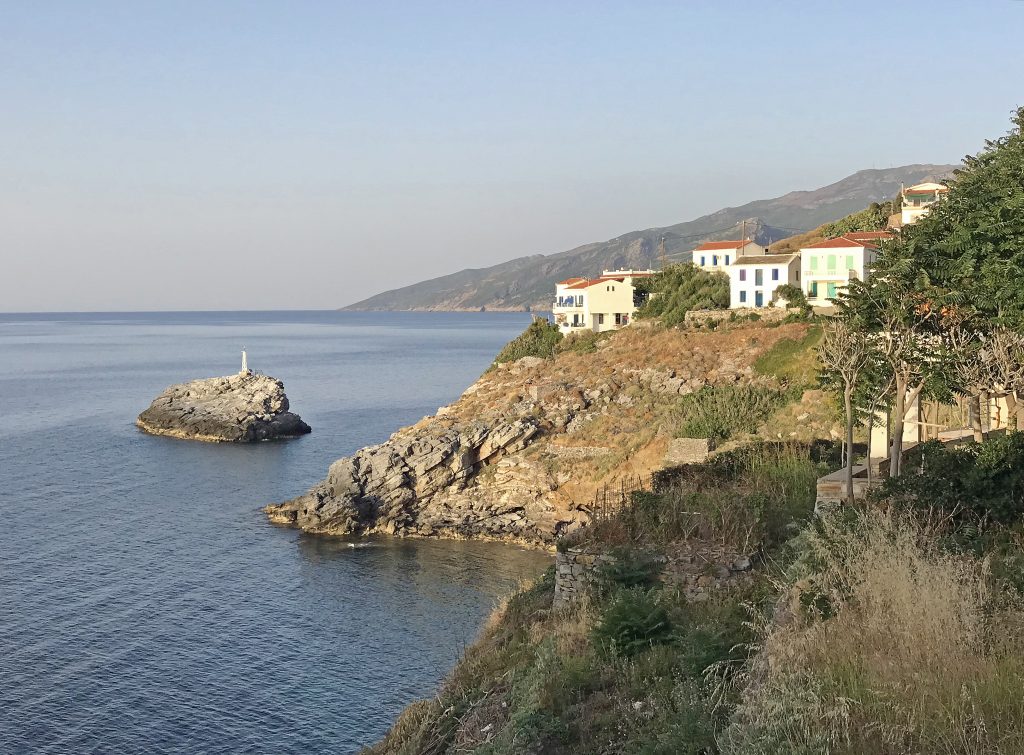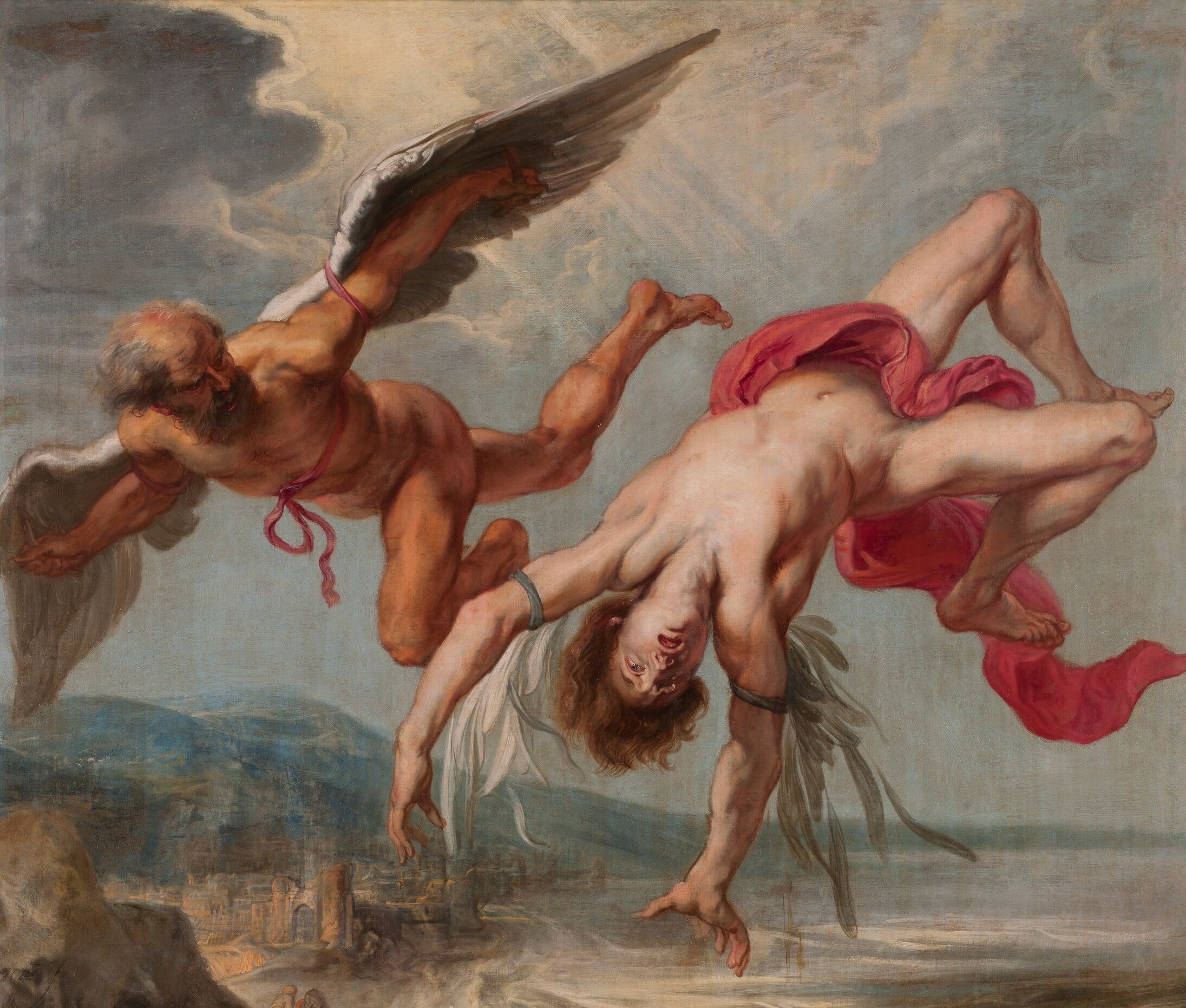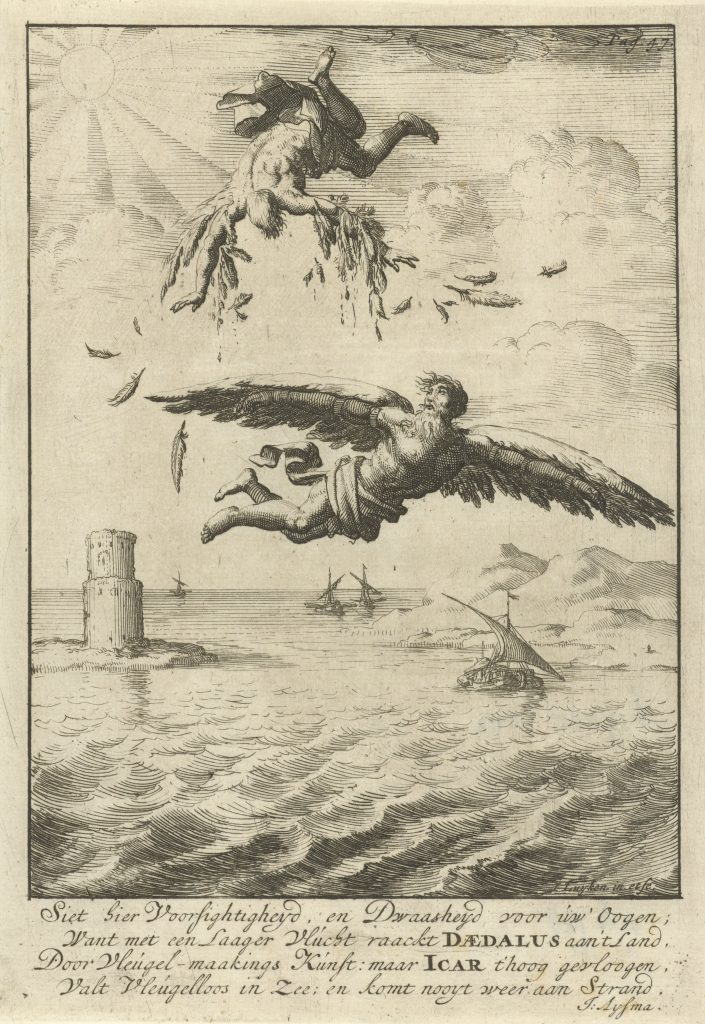10 Facts You Didn’t Know About Anthony van Dyck
Anthony van Dyck, a Flemish Baroque painter of remarkable skill, left an indelible mark on art history. His signature style of refined portraits and...
Jimena Aullet 24 October 2024
Imagine you’re standing in front of a painting that tells the tragic story of Icarus falling from the sky. The artist’s task was not only to capture the essence of the myth but also to convey the intense emotions that come with it. After all, art is all about communicating feelings and experiences, and choosing the right techniques to do so is crucial. Artists try to convey emotions with mythological scenes often inspired by literature. The Fall of Icarus exemplifies this, warning against overreaching.
For centuries, painters have attempted to depict this scene in various styles, but one stands out for its dramatic impact: Baroque. The Baroque style is characterized by its attention to detail and use of dramatic lighting and contrast, making it the perfect choice for bringing the intense emotions of the myth to life on canvas.
The great craftsman Daedalus once enjoyed favorable treatment from Minos, the legendary king of Knossos, on Crete. As Minos’ wife had an affair with a Cretan bull, she gave birth to a shameful monster, a human with a bull face named Minotaur. Deciding to jail the Minotaur, Minos hired Daedalus to build a confusing structure, a labyrinth, from which the monster would never find a way out. However, at some point, Daedalus had to flee away from Crete, and it was allegedly difficult to make it through the sea. His solution was to build wings for himself and his son, Icarus.

In his monumental and dramatic manner, as is common of Baroque artists, Charles Le Brun depicts Daedalus and Icarus as the other attaches the wings to his son’s body. The composition itself has mostly diagonal lines, one of the main characteristics of Baroque painting. Diagonal lines are generally perceived as “unstable” in human psychology. Most Baroque painters use them exactly to communicate that feeling.
As happens with many myths, there are numerous versions of how this story exactly happened. The most popular reference to the Fall of Icarus comes from the Roman poet Ovid and his work Metamorphoses. Although other ancient authors tell slightly different stories, Ovid’s is the most widely translated and distributed, resulting in the most artistic depictions showing the Fall of Icarus as described in this work.
According to most sources from ancient literature, Daedalus was a great Athenian craftsman, inventor, and architect. However, he was also vain and envious. After he was found guilty of killing his incredibly talented nephew, he fled Athens with his son Icarus to avoid serving a sentence.
They settled on Crete. After some time, Daedalus either fell into disfavor with the powerful Minos due to his Athenian bonds, or he just didn’t want to be on a distant island anymore. He collected eagles’ feathers and used wax to stick them together. That way, he created wings that were big enough for a person to fly. Flying was always one of humanity’s biggest ambitions, and it remained so for quite a long time.
Icarus was merely a playful and ambitious boy. He enjoyed flying a bit too much, coming too close to the sun. As a result, the wax on his wings melted, the feathers decomposed, and he fell into the deep sea. Once Daedalus noticed what happened to his son, it was too late. This story is the very origin of the proverb, “don’t fly too close to the sun”.
After that, the myth says that Daedalus landed on a shore and prayed to Poseidon to give him the boy’s body so that he could bury him with dignity. His prayers were listened to. The area of the Aegean sea where Icarus fell would later be called the Icarian Sea. The island where Daedalus allegedly buried his son will later become Icaria.
Nowadays, the island of Icaria is known for its longevity and slow lifestyle. It is the exact contrast to the wildly impatient nature of the young Icarus. Nevertheless, the cliffs and unwelcoming coasts of this island just complete the picture of the drama of this story and its artistic depictions.

Many art teachers try to motivate students to focus on gesture drawing as a starting point for the figure-drawing process. That is, they want students to start by observing dynamism and movement before thinking about volume, proportions, shadows, and anatomy.
The figure in the air is one of the finest examples of how to look at the gesture through kinetic energy. Fall of Icarus by Jacob Peter Gowy, a close collaborator of Peter Paul Rubens, is a particularly dramatic scene. At the base of this work is the ability to communicate, or even exaggerate the action line as a base of the gesture. After making sure that the action line works, the artist gave us additional messages such as facial expressions and the sharp contrast between the body with working wings in the air and the falling body.
Additionally, a few human figures far away on the shore seem to pay no attention to Daedalus and Icarus. They turned their backs on the scene.

Etching was quite a popular artistic medium in the 17th century. Its greatest masters made sure to engrave the finest details, such as decomposing pieces of Icarus’ feathers.

In contrast, the work of Italian Baroque painter Carlo Saraceni gives us a closer resemblance to Ovid’s version of the myth. In Metamorphoses, there is a clear mention of peasants who observe the tragic event with a sense of shock, instead of just minding their own business.
The figures come clearly in front, as the main topics within the composition, while observers remain in the shadow pointing at the scene.
The composition is placed into an imaginary landscape. The observers’ clothes are contemporary for the artist. Saraceni was one of the Carravaggisti, the painters influenced by Caravaggio, the painter many consider to be the initiator of the Baroque. Additionally, Saraceni’s style belongs to the tenebrism artistic style (tenebroso is another word for chiaroscuro, meaning dramatic contrasts between light and shadow).
In conclusion, the sense of emotion in paintings comes as a result of hard work on the lines. It is all about the line quality, direction, and length. The sense of liveliness in mythological scenes is a unique connection between the language of words and the language of lines.
Ikaria, the Guide to the Archaeological Museum of Agios Kyrikos, Hellenic Ministry of Culture and Sport, Ikaria, 2014.
Watch Icarus Falling! A Story for children. Google Arts and Culture. [Accessed 30 Sep 2021].
D. Boomhower, Gesture Drawing: Capturing the Feeling of the Moment. [Accessed 30 Sep 2021].
DailyArt Magazine needs your support. Every contribution, however big or small, is very valuable for our future. Thanks to it, we will be able to sustain and grow the Magazine. Thank you for your help!